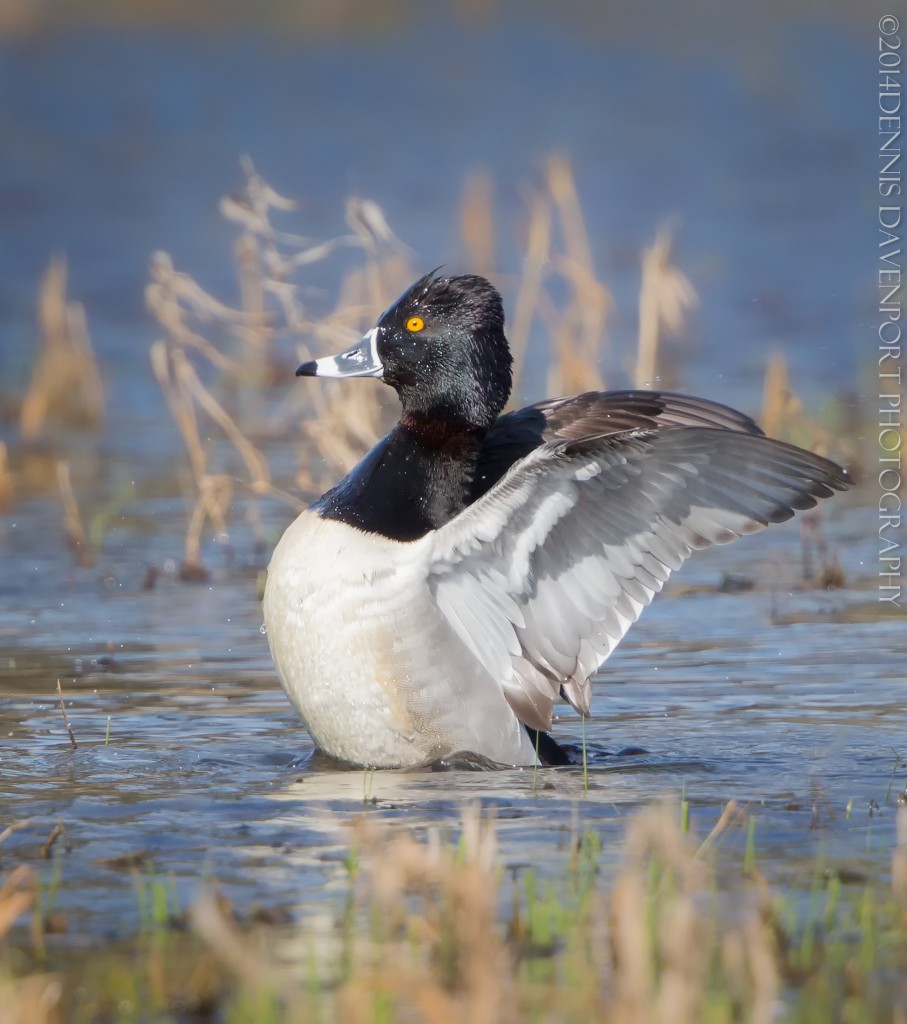The bright sun on Friday, March 21, 2014 at Ridgefield NWR allowed me to take some shots with my f8–1000mm (500 II + 2x III) set up. This was my first opportunity to use my 500mm lens since my daughter, Kimi, and I spent time calibrating the Auto Focus using the LensAlign MkII target over at her house. (I’ll get into more details about the actual testing in a future blog post).
We calibrated the lens bare at 500mm, and also with both the 1.4x and 2x extenders separately attached. The actual lens micro-adjustment was made in the camera, which memorizes and utilizes the new adjustments settings depending upon which lens set up is attached to the camera.
This shot of the Ring-necked Duck was made at a distance of about 100-120 feet, a distance I’d never attempt with the bare 500 on this size of bird. While I wasn’t crazy about the harsh bright sunlight from an image standpoint (I’d rather have some lightly diffused light for this color of duck), it gave me a good amount of light to enable me to test the f8-1000mm set up in action conditions.
A tip about photographing waterfowl behavior: If you see a duck “taking a bath” in the water, i.e., splashing around and ducking its head under water to get water on its back, there’s a very good chance that soon it will do this standing up/wing flap movement captured here in this shot. So have your camera set with a fast shutter speed, focus, and be ready to shoot bursts.
Canon 5D Mark III, 1/1250, f8, ISO 800, 1000 mm.
